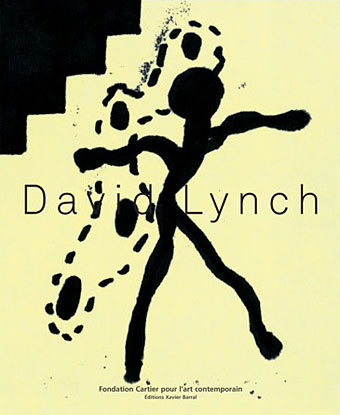
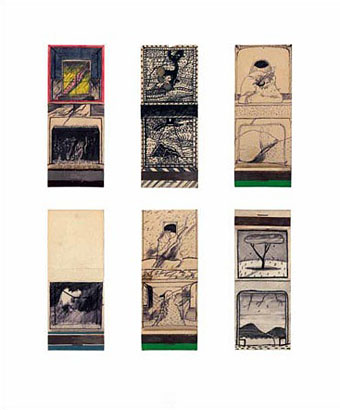
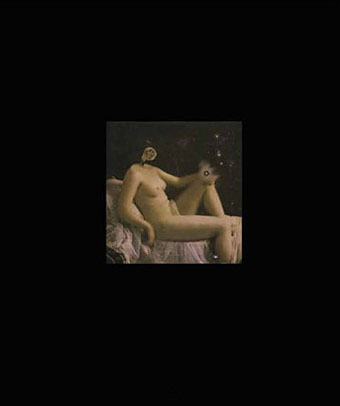
Major art exhibition at the Cartier Foundation opens today.
And while we’re on the subject, let’s not forget Inland Empire.
Previously on { feuilleton }
• Inland Empire
A journal by artist and designer John Coulthart.
Film



Major art exhibition at the Cartier Foundation opens today.
And while we’re on the subject, let’s not forget Inland Empire.
Previously on { feuilleton }
• Inland Empire
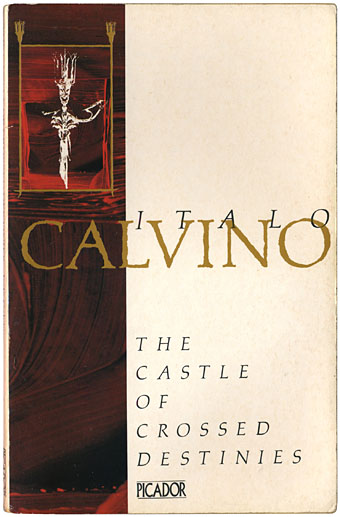
The Castle of Crossed Destinies (1986).
The Brothers Quay are known mainly for their incredible animated films but in the 1980s they were also working as book illustrators and stage designers. Today’s secondhand find was one of their paperback designs for Italo Calvino, part of a series they produced for Picador when the books were reprinted after his death. This is the first time I’ve seen this edition of The Castle of Crossed Destinies, it seems to be more common in an earlier version showing some of the Tarot cards that appear inside the book and which inspire its tales.
Information about this aspect of the Quays’ work is virtually non-existent so I’ve yet to discover how many covers they did in this series. Or, indeed, whether their later Abacus cover (below) was a reprint of the early designs or a new one altogether. Picador had a great run of covers in the 1980s, some of which can be better than the books they decorate. But more often than not they hit on a great design and a great book, as with these pairings.
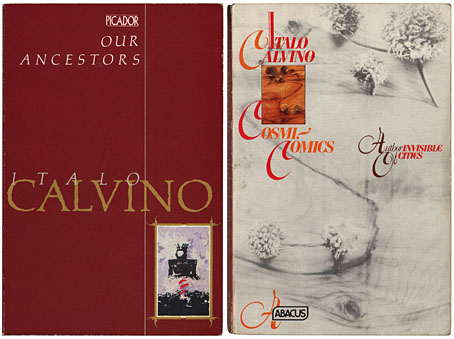
left: Our Ancestors (1986); right: Cosmicomics (1987).
Elsewhere on { feuilleton }
• The book covers archive
• The Quay Brothers archive
Previously on { feuilleton }
• Tressants: the Calvino Hotel
Samadhi (1967).
“Jordan Belson is one of the greatest artists of visual music. Belson creates lush vibrant experiences of exquisite color and dynamic abstract phenomena evoking sacred celestial experiences.” William Moritz
Good things come to those who wait. Following their collection of Oskar Fischinger films, the Center for Visual Music releases Jordan Belson: 5 Essential Films in March. Fischinger worked on Fantasia and Belson also exerted some small influence on Hollywood with the special sequences he created for Donald Cammell’s Demon Seed (imaginings of the film’s Proteus computer) and Philip Kaufman’s The Right Stuff (the vortex seen by Sam Shephard at the edge of the stratosphere). You can read more about Belson’s work in Expanded Cinema by Gene Youngblood, an essential guide to film outside the narrative mainstream.
Elsewhere on { feuilleton }
• The abstract cinema archive
Anyone who’s seen a Soviet film from 1947 onwards will recognise the logo of the Mosfilm studio which featured a model of Vera Mukhina’s Worker and Kolkhoz Woman monument. This 24-metre tall steel-plate statue proved surplus to requirements after the collapse of the old order, like so many monuments of that period. English Russia has a series of moody photographs of the structure lying in pieces whilst being dismantled.
Poor Vera, who died in 1953, must have thought her work would last a very long time; these pictures are a poignant reminder of the ephemeral nature, not only of art, but of whole ideologies. They’re also reminiscent of the deliberately degraded sculptures made by Igor Mitoraj (below) which trade for their effect on exactly this disjunction between delusions of permanence and the ravages of history.
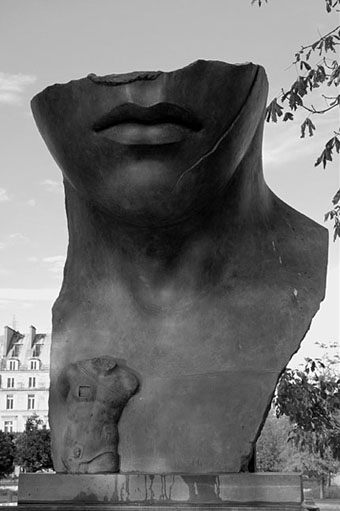
And on these Flickr pages you can see one of Mitoraj’s influences from a ravaged past, the fragments of the Colossal Statue of Constantine in the Palazzo dei Conservatori, Rome.
Previously on { feuilleton }
• The Stalker meme
• The art of Igor Mitoraj
• Enormous structures II: Tatlin’s Tower
• Solaris
Title by John Dee, words by William Shakespeare, narration by Judi Dench and music by Coil; Derek Jarman’s oneiric film/poem is released on DVD, along with two other works.
The BFI releases three Derek Jarman films together—Caravaggio (1986), Wittgenstein (1993) and The Angelic Conversation (1985)—all digitally restored and re-mastered for DVD and each with extensive and illuminating extra features.
The films were made with the BFI Production Board, whose aim was to foster innovation in British filmmaking, thus providing a natural home for Jarman’s artistic sensibility. These three films represent highpoints in his career and are perhaps the most enduring in their appeal and relevance to contemporary audiences.
Intense, dreamlike, and poetic, The Angelic Conversation is one of the most artistic of Derek Jarman’s films. With his painter’s eye, Jarman conjured, in a beautiful palette of light, colour and texture, an evocative and radical visualisation of Shakespeare’s love poems.
Of the 154 sonnets written by Shakespeare, most were written to an unnamed young man, commonly referred to as the Fair Youth. Here, Judi Dench’s emotive readings of 14 sonnets are coupled with ethereal sequences; figures on seashores, by streams and in colourful gardens. The disruption of these magical scenes with images of barren and threatening landscapes echoes perfectly the celebration and torment of love explored in the sonnets.
Shot on Super-8 before being transferred to 35mm film, the unique technical approach results in a striking aesthetic, with Coil’s languorous soundtrack completing the intoxicating effect.
Previously on { feuilleton }
• James Bidgood
• Kenneth Anger on DVD…finally
• Un Chant d’Amour by Jean Genet